| VATICAN CITY-STATE/COUNTRY |
 |
Vatican City-State The Vatican is one of several cities that are independent city-states in the world. Monaco City, and Singapore are other examples of Countries that are Cities. |
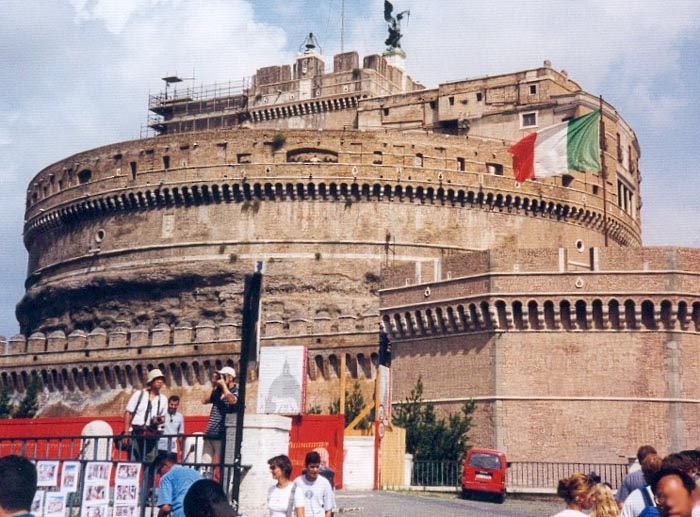 |
Vatican City-State Castle Sant Angelo - This massive fortress takes its name from the statue of Archangel Michael on its summit. It began in AD139 as the Emperor Hadrian's mausoleum. Since then it is had many roles. It was part of the Emperor Aurelian's city wall, it was a medieval citadel ,a prison and a residence of the popes in times of political unrest. Fron the dank cells in the lower levels to the fine apartments of the renaissance popes above, a 58 room museum covers all aspects of the castle's history. |
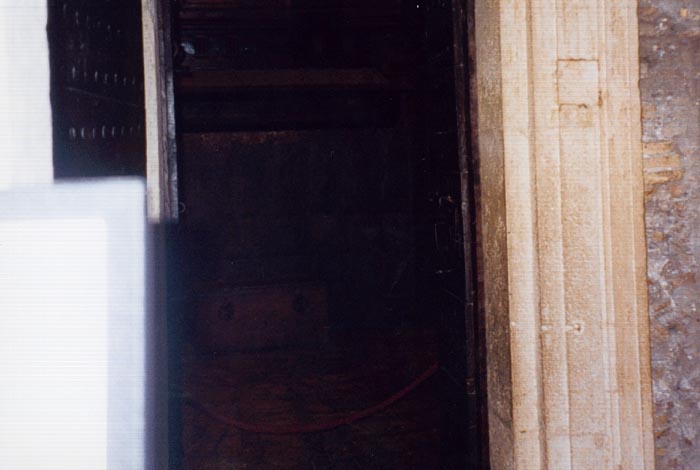 |
Vatican City-State This is a picture of the Treasury Door. The bank vault of the pope. |
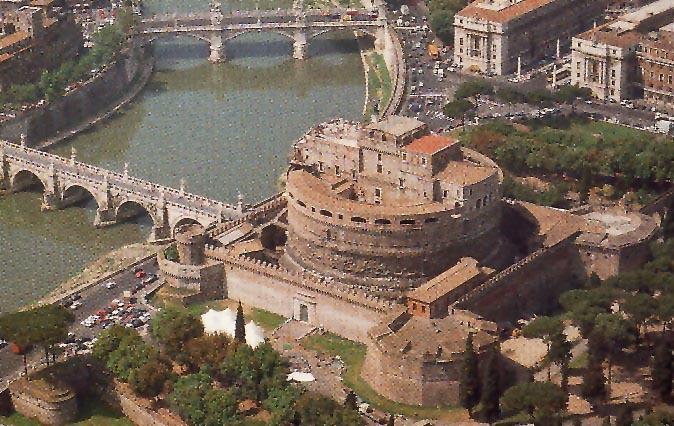 |
Vatican City-State In 139AD The Mausoleum was completed by antoninus Pius, in AD130 Hadrian began a familiy mausoleum, In 271 The Tomb is incorporated into Aurelian wall and fortified. In 1390 Pope Boniface IX remodeled the castle. In 1493 Pope alexander VI restored the Vatican Corridor. In 1527 the Castle withstands siege during the sack of rome. In 1542 Sala Paoline and apartments built for Pope Paul III. |
 |
Vatican City-State This is a picture of the Vatican corridor. It leads away from the Vatican Palace to Castel Sant'Angelo. It was built in 1277 to provide an escape route when the pope was in danger. the Pentagonal ramparts built around the castle during the 17th century improved its defenses in times of siege. |
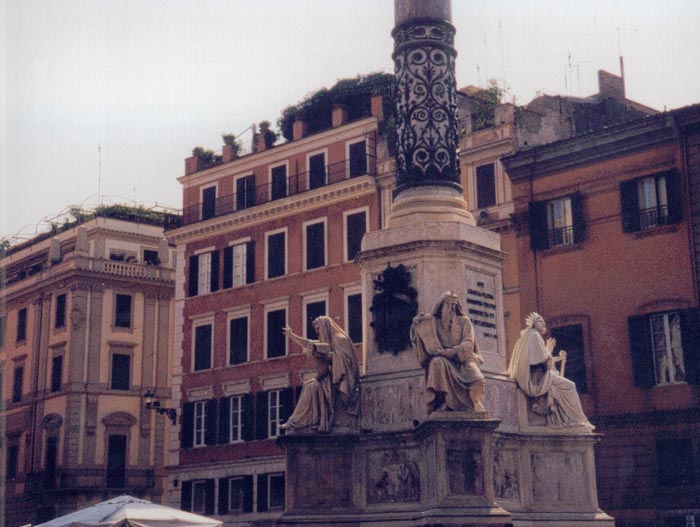 |
Vatican City-State Inaugurated in 1857, this column commemorates Pope Pius IX's proclamation of the doctrine of the Immaculate conception. This underscored that the virgin Mary was the only human ever to have been born without the stain of original sin. The column dates from ancient rome. Now it is crowned with a statue of the Virgin Mary, it is one of the many pagan monuments in the city to have been converted to christian use. |
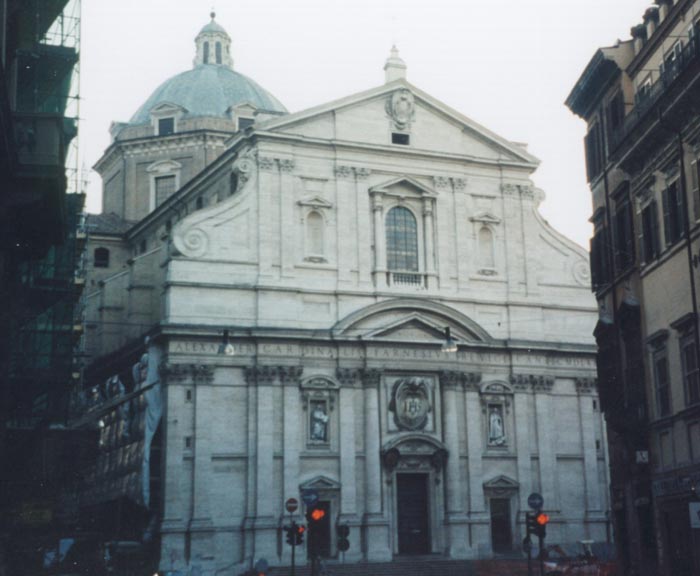 |
Vatican City-State Gesu - This dates from between 1568 and 1584. the Gesu was the first Jesuit church to be built in rome. Its design epitomizes the Counter-reformation Baroque architecture and has been much imitated throughout the Catholic world. The layout proclaims the church's two major functions : a large nave with side pulpits for preaching to great crowds, and a main altar as the centerpiece for the celebration of the mass. The decoration in the nave and dame was added a century later. Its message it clear : faithful Catholic worshipers will be joyfully uplifted into the heavens, while Protestants and heretics will be flung into hell's fires. |
 |
Vatican City-State The Jesuits were the shock troops of the Pope. It was created in response to the Protestant movement. The Protestants asked the people to learn for themselves. To denounce the corruption of the papacy, the selling of indulgences. The pope sold tickets to heaven, allowing people to indulge in whatever sin they chose. Martin Luther was horrified at this corruption, and began the Protestant movement. The Catholics, like a cornered dog, responded by trying to intimidate and cow their follower-sheep into submission. They did this with huge, massive, flowery, impressive, art and architecture. We call this type of art Baroque. |
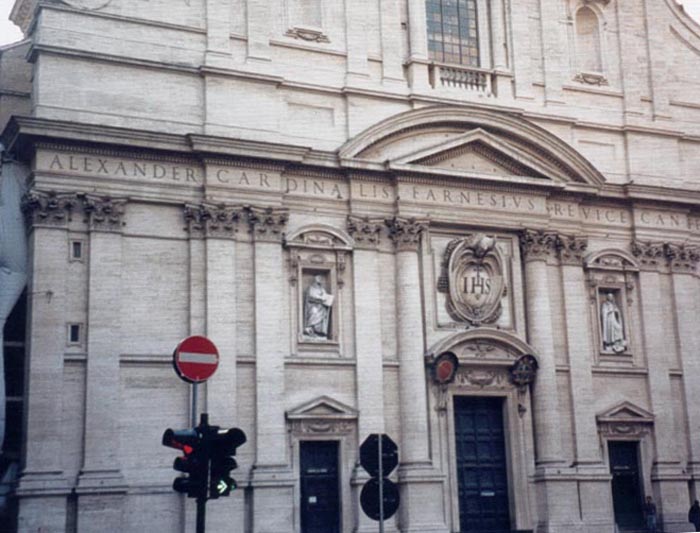 |
Vatican City-State St. Ignatius and the Jesuit order - The spanish soldier ignatius Loyola (1491-1556) joined the church after being wounded in battle in 1521. He came to Rome in 1537 and founded the Jesuits, sending missionaries and teachers all over the world to convert souls to Catholicism. |
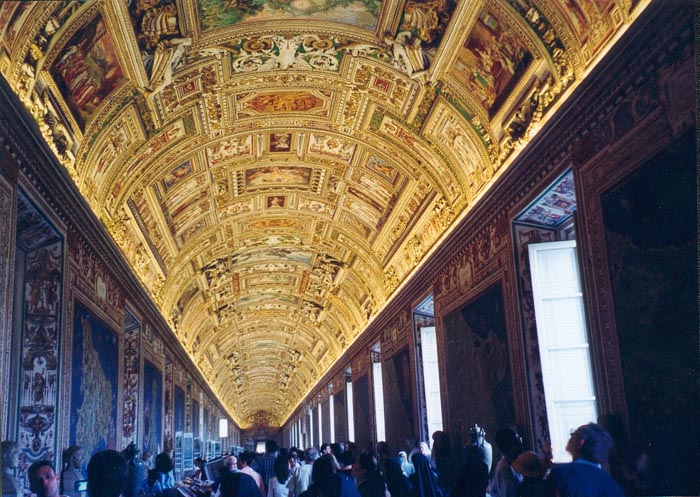 |
Vatican City-State This is Map room in the Vatican. |
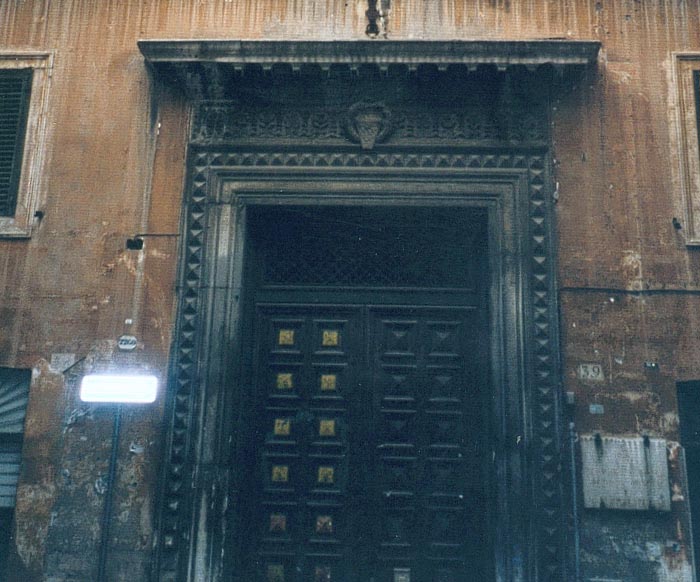 |
Vatican City-State Palazzo della Cancelleria - This palace is a supreme example of the confident architecture of the Early Renaissance. It was begun in 1485. It was financed partly with the gambling winnings of Cardinal raffaele Riario. Roses, the emblem of the Riario family, adorn the vaults and capitals of the beautiful Doric courtyard. The Palazzo's interior was decorated after the sack of rome in 1527. Giorgio Vasari boasted that he completed the work on one enormous room in just 100 days. Michelangelo allegedly retorted : "It looks like it. |
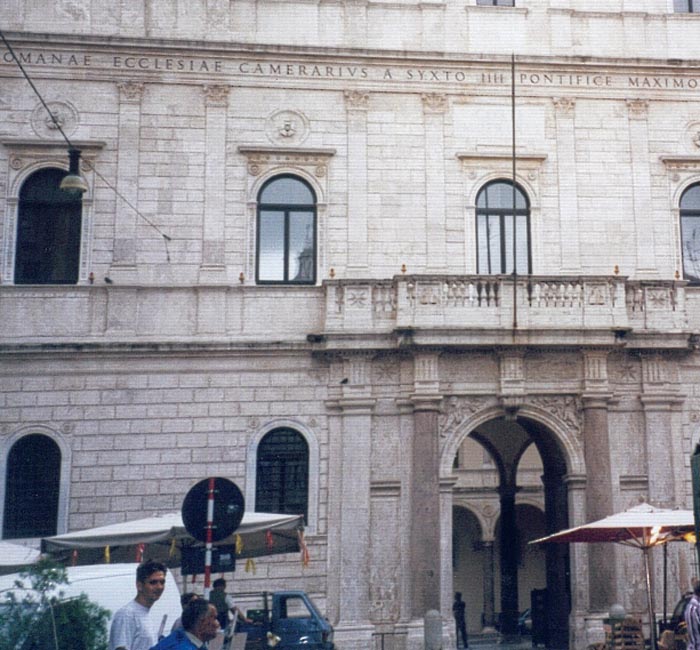 |
Vatican City-State Other Mannerist artists, Perin del Vaga and Francesco Salviati, frescoed the rooms of the cardinal in charge of the Papl Chancellery, the office that gave the palazzo its name when it was installed here by pope Leo X. To the right of the main entrance is the unobtrusive and rather quaint church of San Lorenzo in Damaso, founded by Pope Damasus. Its surrounding porticoes housed libraries that held the first Papal Archives. |
 |
Vatican City-State This is the Piazza San Pietro - This huge plaza is located in front of the Vatican. |
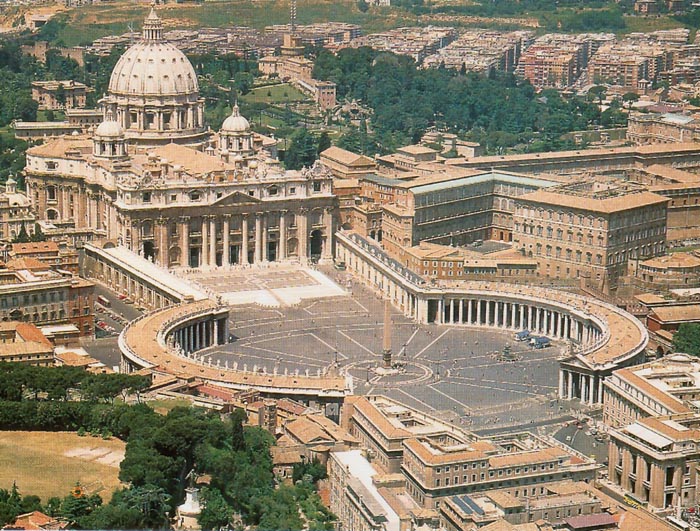 |
Vatican City-State Piazza San Pietry - a closer view of the plaza. |
 |
Vatican City-State San Giovanni in Laterano - Early in the 4th century, the Laterani family were disgraced and their land taken by Emperor Constantine to build Rome's first Christian basilica. today's church retains the original shape but has been destroyed by fire twice and rebuilt several times. Borromini undertook the last major rebuild of the interior in 1646, and the main facade is an 18th century addition. Before the pope's move to Avignon in 1309 the adjoining Lateran Palace was the official papal residence, and until 1870 all popes were crowned in the church. The Pope is the bishop of rome, and here in the city's main cathedral he celebrates Maundy thursday mass and attends the annual blessing of the people. |
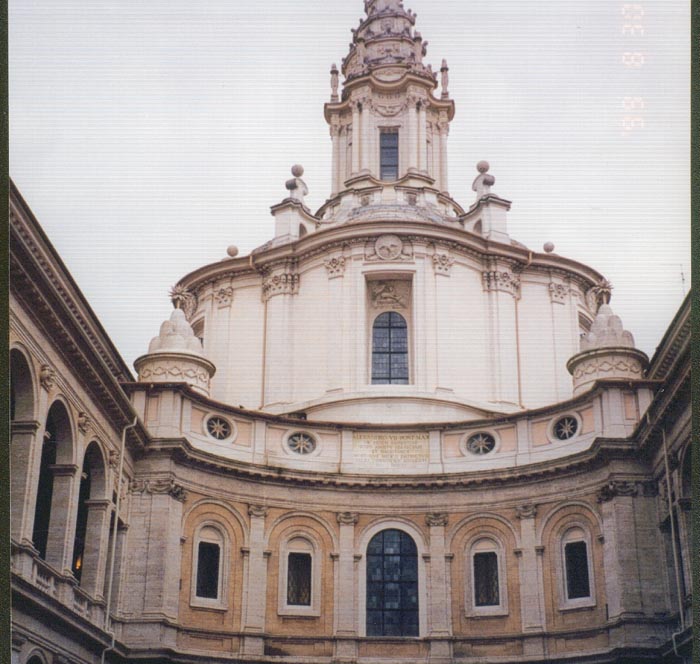 |
Vatican City-State Sant'Ivo all Sapienze - The church's lantern is crowned witha cross on top of a twisted spiral. Seen up close, this Borromini church is striking. No other Baroque church is quite like it. The church is based on a design of astonishing geometrical complexity, with walls that are a breathtaking combination of concave and convex surfaces. It stands in the small courtyard of the Palazzo della Sapienza, seat of the old University of rome from the 15th century until 1935. |
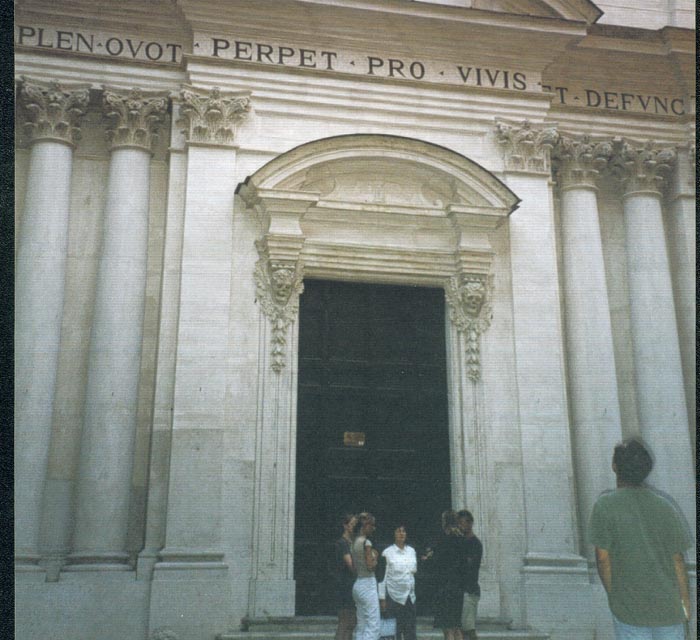 |
Vatican City-State Santa Maria dell'Orazione e Morte - Two dramatic winged skulls flank the doorway to this church dedicated to the burial of the dead. A pious confraternity was formed here in the 16th century to collect the bodies of the unknown dead and give them a Christian burial. The theme of death is stressed in this church, dedicated to St. Mary of Prayer and Death. The doors and windows of ferdinando Fuga's dramatic Baroque facade are decorated with winged skulls. Above the central entrance is a celpsydra (ancient hourglass) symbolic of death. |
 |
Vatican City-State Santa Maria Maggiore - This Roman basilica has a triple nave colonade. It has part of its original 5th century building. The Cosmatesque marble floor and Romanesque bell tower, with its blue ceramic roundels are medieval. The Renaissance saw a new coffered ceiling, and the Baroque gave the church twin domes and its imposing front and rear facades. The mosaics are Santa Maria's most famous feature. The 5th century come the Biblical scenes in the nave and the spectacular mosaics on the triumphal arch. |
 |
Vatican City-State Scala Santa - This Scala Santa is the holy staircase. The 28 steps are said to be those that Christ ascended in Pontius Pilate's house during his trial, and are supposed to have been brought from Jerusalem by St. Helena, mother of the emperor Constantine. The steps were moved to their present site by Pope Sixtus V (reign 1585-1590) when the old Lateran Palace was destroyed. No foot may touch the holy steps so they are coverd by wooden boards. |
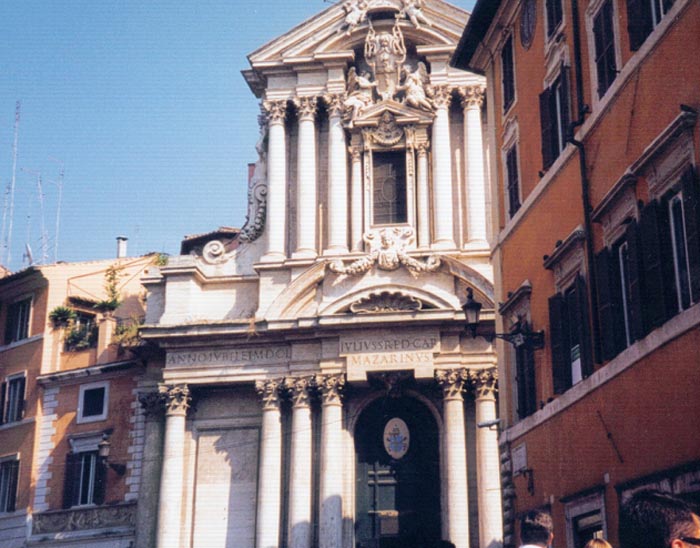 |
Vatican City-State Santi Vincenzo e Anastasio - this overlooks the Trevi Fountain and is one of the most elaborate Baroque facades in Rome. Its forest of columns are crowned by the huge coat of arms of Cardinal raimondo Mazzarino, who commissioned Martino Longhi the Younger to build the church in 1650. The female bust above the door is one of the cardinal's famous nieces, either Louis XIV's first love, Maria Mancini (1639-1715), or her younger sister, Ortensia. |
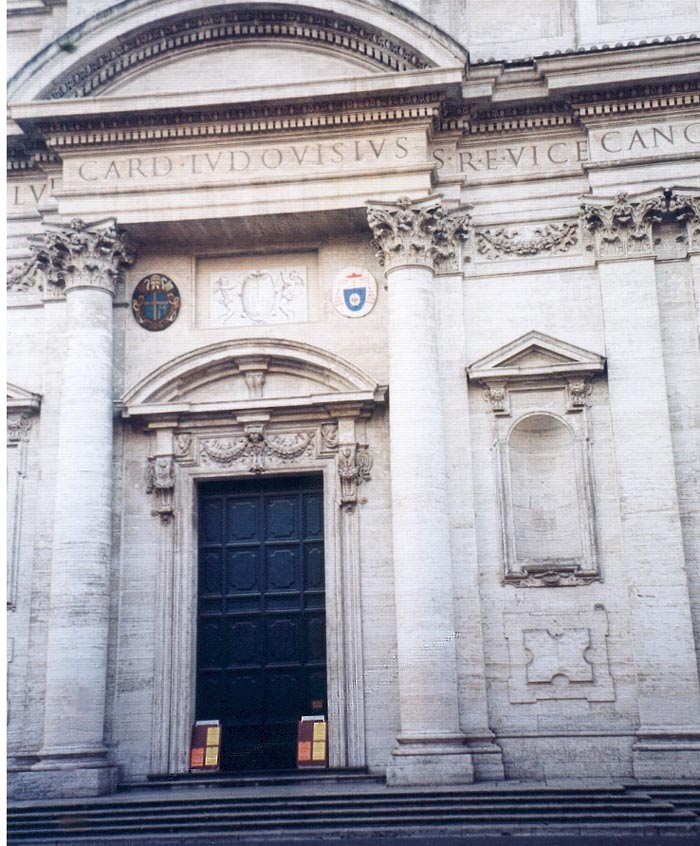 |
Vatican City-State Sant'Ignazio di Loyola - The church was built by Cardinal Ludovisi in 1626 in honor of st. Ignatius of Loyola, founder of the society of Jesus and the man who most embodied the zeal of the Counter-Reformation. Together with the Gesu, Sant'Ignazio forms the nucleus of the Jesuit area in Rome. Its massive interior, lined with precious stones, marble, stucco and gilt, creates a thrilling sense of theater. The church has a Latin- cross plan, with an apse and many side chapels. |
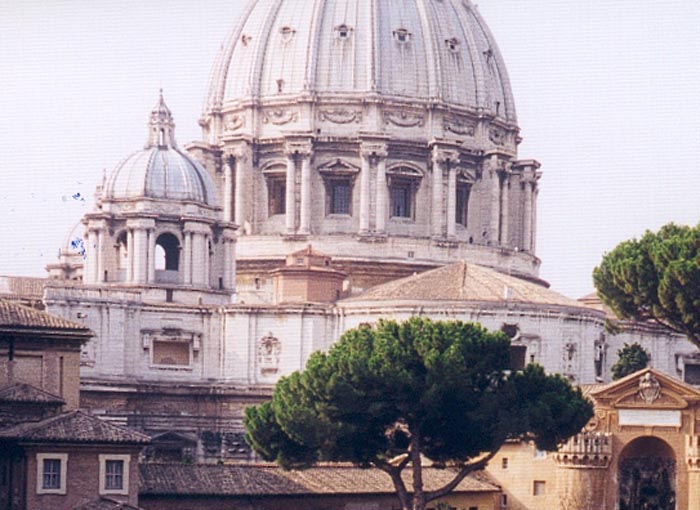 |
Vatican City-State The center of the Roman Catholic faith, St. peter's draws pilgrims from all over the world. Most are cowed into submission when they take in the lavish, sumptuously decorated basilica beneath Michelangelo's vast dome. A shrine was erected on the site of St. Peter's tomb in the 2nd century, and the first great basilica, ordered by the Emperor Constantine, was completed around 349AD. By the 15th century it was falling down, so in 1506 Pope Julius II laid the first stone of a new church. It took more than a century to build, and all the great architects of the Roman Renaissance and Baroque had a hand in its design. |
 |
Vatican City-State The interior of St. Peter's cathedral |
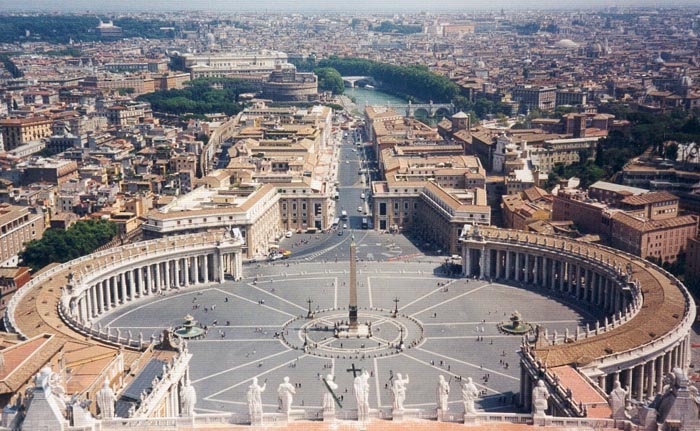 |
Vatican City-State The superb symmetry of Bernini's colonnade can be appreciated from the top of St. Peter's dome. |
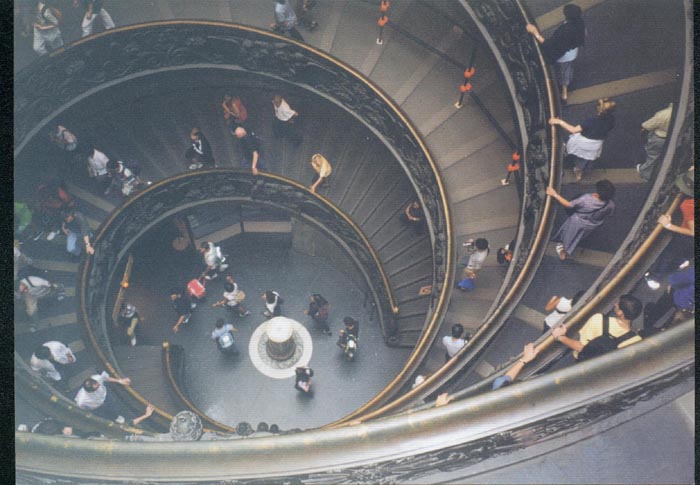 |
Vatican City-State The Spiral ramp is a spectacular MC Escher like stairway up to the Vatican museums up from the street level. It was designed by Giuseppe Momo in 1932. |